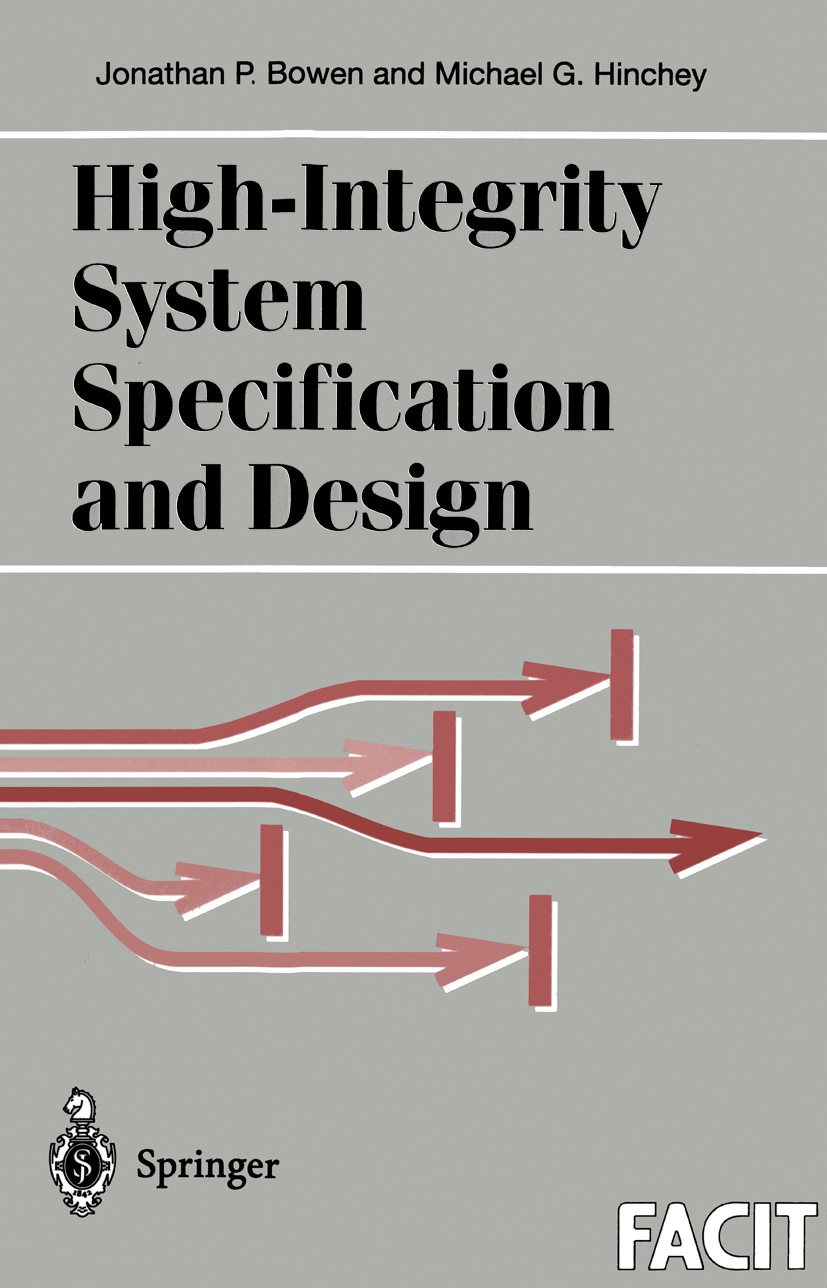| 书目名称 | High-Integrity System Specification and Design | | 编辑 | Jonathan P. Bowen,Michael G. Hinchey | | 视频video | http://file.papertrans.cn/427/426615/426615.mp4 | | 概述 | Brings together classic essays on system specification and design, and new contributions, in a single volume | | 丛书名称 | Formal Approaches to Computing and Information Technology (FACIT) | | 图书封面 |  | | 描述 | Errata, detected in Taylor‘s Logarithms. London: 4to, 1792. [sic] 14.18.3 6 Kk Co-sine of 3398 3298 - Nautical Almanac (1832) In the list of ERRATA detected in Taylor‘s Logarithms, for cos. 4° 18‘3", read cos. 14° 18‘2". - Nautical Almanac (1833) ERRATUM ofthe ERRATUM ofthe ERRATA of TAYLOR‘S Logarithms. For cos. 4° 18‘3", read cos. 14° 18‘ 3". - Nautical Almanac (1836) In the 1820s, an Englishman named Charles Babbage designed and partly built a calculating machine originally intended for use in deriving and printing logarithmic and other tables used in the shipping industry. At that time, such tables were often inaccurate, copied carelessly, and had been instrumental in causing a number of maritime disasters. Babbage‘s machine, called a ‘Difference Engine‘ because it performed its cal culations using the principle of partial differences, was intended to substantially reduce the number of errors made by humans calculating the tables. Babbage had also designed (but never built) a forerunner of the modern printer, which would also reduce the number of errors admitted during the transcription of the results. Nowadays, a system implemented to perform the function of Babbage‘s engine | | 出版日期 | Book 1999 | | 关键词 | communication; concurrency; design; development; distributed systems; formal methods; formal specification | | 版次 | 1 | | doi | https://doi.org/10.1007/978-1-4471-3431-2 | | isbn_softcover | 978-3-540-76226-3 | | isbn_ebook | 978-1-4471-3431-2 | | copyright | Springer-Verlag London 1999 |
The information of publication is updating

|
|
 |Archiver|手机版|小黑屋|
派博传思国际
( 京公网安备110108008328)
GMT+8, 2025-12-29 15:55
|Archiver|手机版|小黑屋|
派博传思国际
( 京公网安备110108008328)
GMT+8, 2025-12-29 15:55


